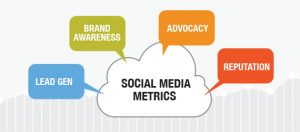
So, you’re marketing a startup. Think revenue, not Series A.
That’s right. Because revenue is free money — you don’t have to pay it back, answer to investors, dilute ownership. Nothing. Nada. No strings attached.
So, why are startups so focused on VC money, when revenue is free?
Beats me.
But, I work as a fractional CMO for startups and I can tell you most businesses wait too long before thinking about marketing a startup. In fact, some experts recommend marketing start before your write the first line of code or connect the first circuits.
Why? Because it’s marketing that brings in revenue.
Let’s explore why more businesses don’t market a startup.
Confusion about marketing a startup
Many businesses don’t think about marketing a startup early because they’re confused about what marketing is.
Marketing unfortunately has a bad reputation with folks thinking only of the top half of the graphic to the left ie. advertising They totally forget that marketing also involves the actions at the bottom of the graphic.
When marketing a startup, sure, you might not need the advertising part of marketing, since you likely don’t have anything to sell yet. But, you certainly need most of the bottom part of the graphic.
Instead of an engineering mind-set, develop a marketing mind-set that focuses on revenue generation from the very start. Build a product customers love by understanding what they love before you start building.
Before you start building your startup, here are some marketing actions you’ll need:
1. Share your idea early and often.
Some folks are terrified of sharing their “brilliant” idea because someone might steal it.
That’s just crazy.
First, you’re probably not the only one who had the idea. Someone, somewhere already thought of it.
If the solution is so obvious and so easy to do, you’ll never protect your product. Ultimately, you’ll have to sell your product, then the whole world knows about it. Someone bigger than you will do it and do it better than you and there’s no way you’ll protect your idea (you can only patent products).
Instead, search for ideas that involve barriers to entry. Patents offer one barrier to entry. Other barriers to entry provide sustainable competitive advantage including:
- A low cost structure — as a startup, you don’t have the high overhead and bureaucracy that make a larger business slow and expensive. Keep it that way.
- A great team with good connections within your target market.
- A strong market base — when Facebook launched, they captured the students at Harvard very quickly, then branched out to other universities. By the time they were ready to leave the relative safety of .edu addresses, they were so strong, it was difficult for a competitor to overtake them.
- Excellent product design
- Superior customer service
2. Product validation
Customers buy solutions, not products.
If your product solves a problem, especially if it’s a big problem for lots of people, you’ve got a winner. Developing a product that doesn’t solve a big problem is just a waste of resources. So, before you code, do a serious product validation.
Too often, I see startups solving a problem that doesn’t exist.
Or a problem with lots of good solutions available.
No matter how much money you have, no matter how talented your team is, you’ll never go far with a product that doesn’t solve a major problem shared by lots of consumers.
Marketing is critical for doing product validation. But, don’t think market research.
There’s the old saying attributed to Henry Ford,
If I had asked people what they wanted, they would have said faster horses.
Consumers don’t always know how to solve their own problems. But, they know a solution when they see it.
 For all his failings, Steve Jobs was great at anticipating what customers needed without asking them. He observed how they interacted with their worlds, then provided problems that solved problems while fitting seamlessly into their lives.
For all his failings, Steve Jobs was great at anticipating what customers needed without asking them. He observed how they interacted with their worlds, then provided problems that solved problems while fitting seamlessly into their lives.
That way, he increased demand, rather than just fight for his share among folks already marketing similar products.
He noticed his daughter, Lisa, always carried a clunky tape player and tapes so she could listen to her music on the go. So, instead of creating a smaller tape player, he transformed the industry by introducing something radically different — the iPod.
So, instead of market research, watch how real people interact with their environments. Listen to things they complain about. Let customers show you want they need.
Then build a prototype (or preferably multiple prototypes) to show your target market. They don’t have to be working prototypes, they can be made of styrofoam or using a rapid-prototyping software tool or using a 3D printer to do a rough prototype.
3. Build your Beta list
Marketing takes time, especially for a radically new product.
If you wait to start marketing when you’re ready to launch, your wonderful new product will simply flounder among the noise created by the plethora of other options. Now, you have a team that’s worked — often for little money — and bills that you need to pay, but no revenue coming in.
It’s never too early to start building a list of folks who are interested in your product. Get the team involved in networking events, start your social media campaigns, build a killer website containing landing pages with great offers, cultivate a media following so they’ll be receptive to your press releases, etc.
Get the word out as much and as often as possible. These folks will be your first testers and it takes time to build an effective list of potential users.
I worked 2 years doing marketing for a startup. We demoed the product when all we had was a powerpoint presentation highlighting the problem and how we were solving it. By the time we launched, we have hundreds of folks who’d signed up as Beta testers. That way, when you launch, you’ve got a built-in group of evangelists to take your product marketing to the next level.
Your Beta list is also a great tool for getting feedback quickly so, at each stage of the process you’re getting feedback from real users.
4. Prepare for launch
Launching is intimidating. You’ve finally finished your baby and you’re ready to show it to the world.
But, what do you do if you launch and nobody comes?
I’ve been to many a launch party where nobody showed up. How sad.
If you’ve been marketing all along, you’ve got your list. Invite them to the launch — whether it’s virtual or real — and ask them to bring friends and share in their social networks. Take the list of media you’ve been cultivating and send a press release announcing your launch.
Otherwise, you’re talking about spending a lot of money to advertise your launch or having it fall flat.
5. Iterate
In my experience, a product is never done. It’s always a work in progress.
After launch, get feedback from real users. But, don’t just ask them how they like it, watch them use it. What problems do they encounter? Which features do they find missing?
And, be prepared for a major revision. Don’t spend everything you have on the first iteration because you’ll likely spend nearly as much on the first iteration.
Also, don’t take it personally. Listen to what users say and watch what they do. Don’t defend the decisions you made. Don’t blame users for problems they encounter. Make it work seamlessly for them.
6. Build and defend your brand
Even during the development phase, work on developing a brand you’ll be proud of. Once you launch, work to defend that brand. If negative comments begin appearing, address the criticism thoroughly. Be empathetic.
Defending your brand doesn’t mean demeaning folks who complain. It means addressing and fixing whatever caused the complaint.
7. New product development
Don’t get complacent with the product you developed. In addition to constant improvement, think about new products related to your core product, as few brands can survive with a single product.
Business & Finance Articles on Business 2 Community(70)
Report Post







